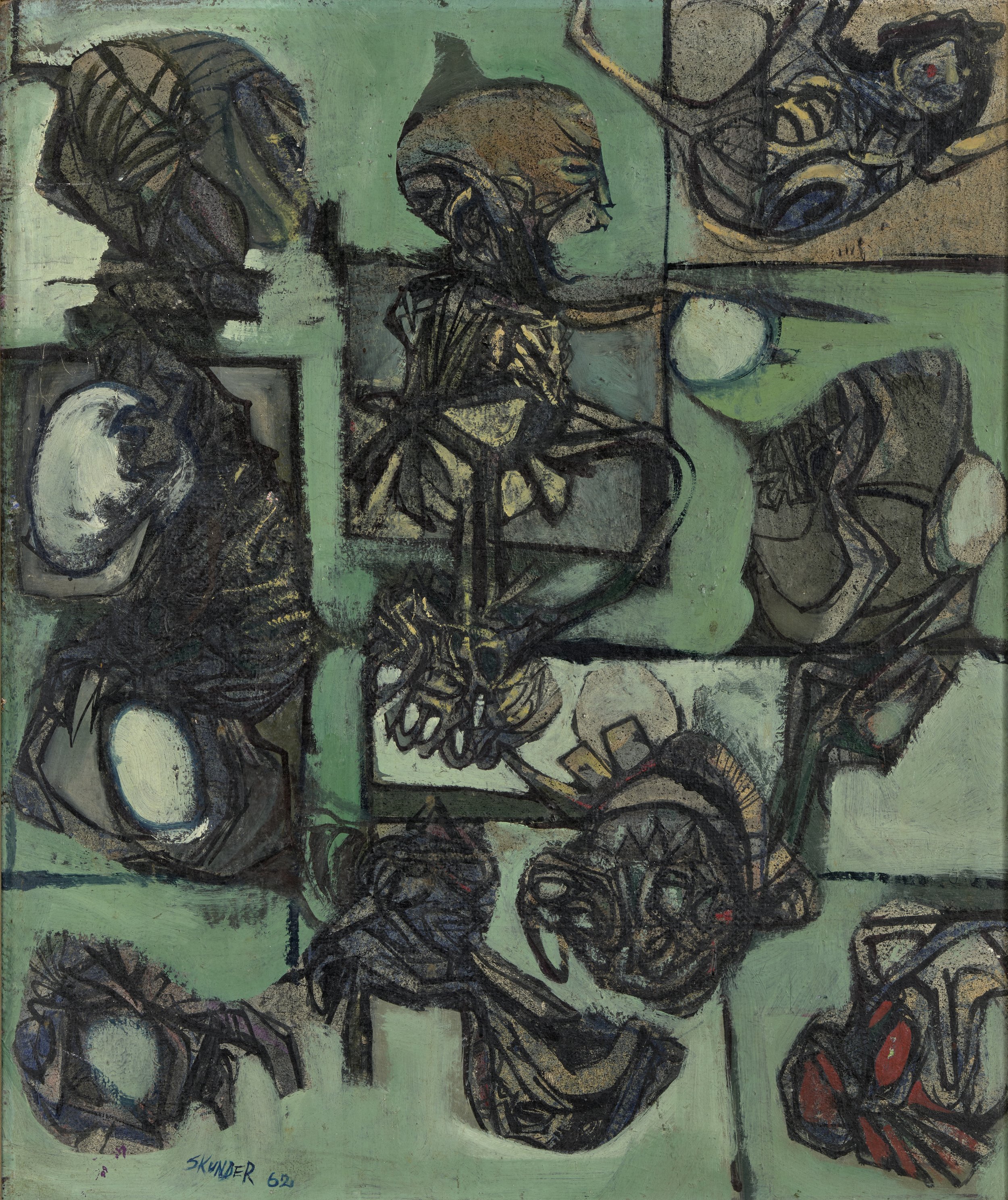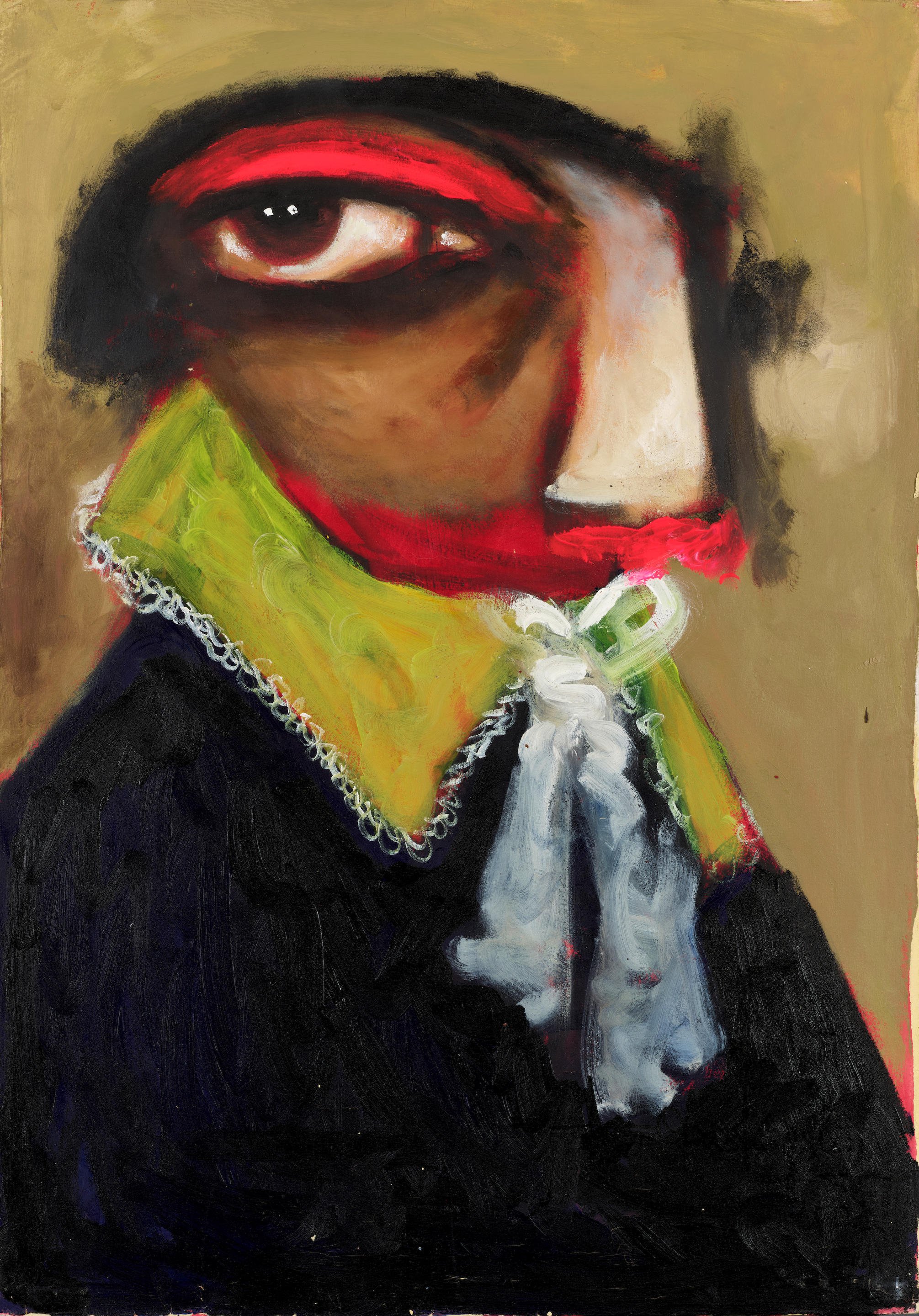Anya Nikolaeva in Conversation with Bonhams’ Head of Sale & Specialist of African Modern & Contemporary Art, Helene Love-Allotey
In the run-up to the Modern and Contemporary Art and Photography from Africa and the Diaspora Sale at Bonhams New York on 27 July, MADE IN BED sat down with the auction house’s Head of Sale & Specialist of African Modern & Contemporary Art, Helene Love-Allotey, to discuss how the sale came about, trends in the African Art market right now, and her educational Instagram account dedicated to African artists and art history.
Helene Love-Allotey, Head of the Modern & Contemporary African Department at Bonhams.
Anya Nikolaeva: Hello Helene, it’s a pleasure to be speaking with you. Thank you for finding the time to share your story and give us some insights into the African art market. Let’s start with your background, what has your journey into the art world been like?
Helene Love-Allotey: Hello Anya, it’s great to be here! My interest in art started during my secondary school years. I did Art for GCSE and A-Levels, however, I always felt like the things we were taught and the approaches we had to art were too narrow. I realised just how narrow when I started my BA in History at SOAS (University of London’s School of Oriental and African Studies) and was exposed to the cultures and histories of all the non-Western countries. There, I took a course on African Art even though my research was initially only focused on the history of Africa and Asia. From there I realised my love for art and joined Bonhams as a Junior Saleroom Assistant after finishing my degree. I then progressed to being an intern at the Modern and Contemporary African Art department and I’ve been climbing up ever since.
Geoffrey Ernest Katantazi Mukasa, Untitled. Oil, pastel, and mixed media collage on board, 94.6 x 61.6 cm.
AN: Wow, that’s impressive! You must have seen it all in the auction world then!
HLA: Yes, certainly! At the time I joined, Bonhams was the only auction house to do dedicated Modern and Contemporary African Art sales back in 2016, so I went from handling art for those initial first sales to now setting them up, which is kind of mad when I think about it! It’s been a lot of hard work, but I do love it since I now lead the team and manage every single aspect of the department. Having done every step of that myself helps me manage the team better. That whole experience was very useful, but it’s quite rare nowadays.
Alexander ‘Skunder’ Boghossian, Untitled, 2021. Oil on board, 54.6 x 45.7 cm.
AN: For sure. It’s amazing that you’ve been able to do that! From there, could you talk us through the upcoming sale and what the African Art market is looking like currently?
HLA: Our sale is on the 27th of July in New York which is very exciting. We’ve been doing sales there since 2019–they’ve been very successful and ground-breaking, in a way, since they managed to raise awareness and bring the market’s attention to the artists from the 1950s and 1960s. The upcoming sale, however, broadens everything out. We’ve included artists who’re a part of the African diaspora as well as expanding into Photography, which I’ve been longing to do for a very long time. We have artists like Malik Sidibé, who’s probably the most well-known one out of the group, as well as Samuel Fosso who recently had a huge retrospective at the MEP in Paris which was amazing. Even though it’s a relatively small sale it ultimately brings together some very unique artists and pieces.
Generally speaking, the trends in African art change constantly, especially in the last two years since the Black Lives Matter movement. A lot of people started to pay attention to diversifying their art collections and notice artists who have been overlooked throughout art history and up to the present day. I’ve been working in the department for a while now and the buzz has been growing year on year. I think with education and general accessibility of information, people have started to look more widely and pay more attention to things and subjects that have not been talked about a lot previously. And unfortunately, African art has been quite badly stereotyped in the past, things have been grouped carelessly, and there was a lack of awareness overall.
In the past few years, African art has been explored a lot more, especially the figurative movements. I’m seeing a lot of young emerging talent doing well on the market, particularly artists from West Africa. There’s been a lot of interesting market activity for some artists. For example, Aboudia (b. 1983, American-Ivorian), who was selling his works for £10,000 two years ago and now is selling well into £150,000. This is great for African art since it shows the strength of the genre and that it is starting to compete with mainstream contemporary art.
The artists I’ve mentioned earlier who were active in the 1950s and 1960s have also been doing well in our New York sales. Artists like Alexander ‘Sukunder’ Boghossian and Afewerk Tekle have been getting a lot of attention–probably because people realised that they have exhibited widely with their Western peers and were doing incredible things in their time but then fell off the radar. This rediscovery and newfound interest are attracting a lot of attention.
Market activity has also been quite good. Major auction houses do African art sales and the 154 Art Fair is now in London, Paris, Marrakech, and New York. There are also more commercial galleries representing African artists as well as more exhibitions generally, so it feels like its presence is ever-increasing on the market.
Malick Sidibé, Un yéyé en position, 1963. Gelatin silver print, 50 x 60 cm.
Malick Sidibé, Nuit du 19/11/73, printed 1973. Gelatin silver print, 45.7 x 30.5 cm.
Samuel Fosso, Untitled. Silver gelatin print, 34.9 x 35.6 cm.
AN: It has certainly been refreshing to see this new part of the market. Could you expand on the photography part of the upcoming sale? I don’t think I’ve seen a lot of that before.
HLA: Although it’s such a small part of the upcoming sale, I’ve been trying to include some African photography for a while now. In New York especially, there is a lot of interest in the medium and I’ve tried to have as much photography as possible included in this one. A lot of photography in this sale is a sort of social exploration and documentary of the time, which I think is a very accessible subject that doesn’t require a lot of prior knowledge and research. People can appreciate it for what it is. I’m excited to see how this one goes and what we can do from there.
It was also great to see the announcement from Tate that they will have an exhibition on African Photography in 2023 (Tate Modern: A World in Common, 6 July 2023-14 January 2024). It’s encouraging that this certainly is a topic that people are exploring a lot more.
Godwin Oluwole Omofemi, Girl with teacup. Oil on canvas, 108 x 98 cm.
Irma Stern, Untitled (At the Initiation Dance Festival), 2009. Gouache on paper, 25.1 x 30.5 cm.
AN: Hopefully, this will boost the artists who’re currently in the auctions. I’ve got my fingers crossed for you! I’m also aware that you run an educational Instagram account that addresses the lack of African Artists & Art in mainstream Art History, @africanarthistory. How did this come about and is there a vision for its development?
HLA: I started this page about a year ago and it’s a little side project that I work on outside of my job. Obviously, my day-to-day environment is very commercial and mostly focused on the business side of things: selling, consigning, valuing… But I realised whilst working in this industry and department that African art still isn’t as well-known as it could be, which goes back to education as it’s still not well-represented in traditional art history courses. So, I thought I could make an easy and accessible platform that will educate people and perhaps open a door for those who may want to learn more and continue their research beyond my posts. It's sort of an artist guide. I try to include a lot of women and artists working in different mediums to make it as diverse as possible so it’s easy for people to explore and see if they find artists that they resonate with.
I’m also very aware that auction houses can be super intimidating, so I’m trying to encourage people to come to auction previews since it’s such an easy way to see a broad variety of art for free. A lot of people are still not comfortable in that setting, which I completely understand, so I’ve turned to social media instead.
Mikhael Subotzky, Strip Search, Pollsmoor Maximum Security Prison, 2004. Inkjet print, 50 x 75 cm.
Kingsley Obasi, Untitled, 2022. Acrylic on canvas, 96.5 x 68.6 cm.
AN: It’s a great platform and exactly what the commercial side of the art world is missing. I’ve certainly made some discoveries by scrolling and reading through your page. Lastly, if there is anything else you want to share, the floor is yours!
HLA: Well, my overall goal is to break boundaries in this industry and not let it be as intimidating and elitist as it currently is. I’m so passionate about raising awareness of African art, a subject I believe is still considerably overlooked in various senses, so I want to drive that change in the industry through my daily job at Bonhams and my side project, @africanarthistory.
Cornelius Annor, Day Break. Acrylic on canvas, 155.5 x 119 cm.
AN: Thank you so much for this interview. It’s great to get insight into your life and the current state of the African Art market! I’m sure we’ll be hearing more about the artists in the upcoming months, as it seems to be following great upward momentum. Best of luck with the sale!
HLA: Thank you so much, it’s been a pleasure talking to you!
Thanks to Helene Love-Allotey on behalf of MADE IN BED.
To learn more about the upcoming Modern and Contemporary Art and Photography from Africa and the Diaspora sale at Bonhams New York, click here.
All images are courtesy of Bonhams.
Anya Nikolaeva
Art Markets & Business Editor, MADE IN BED












